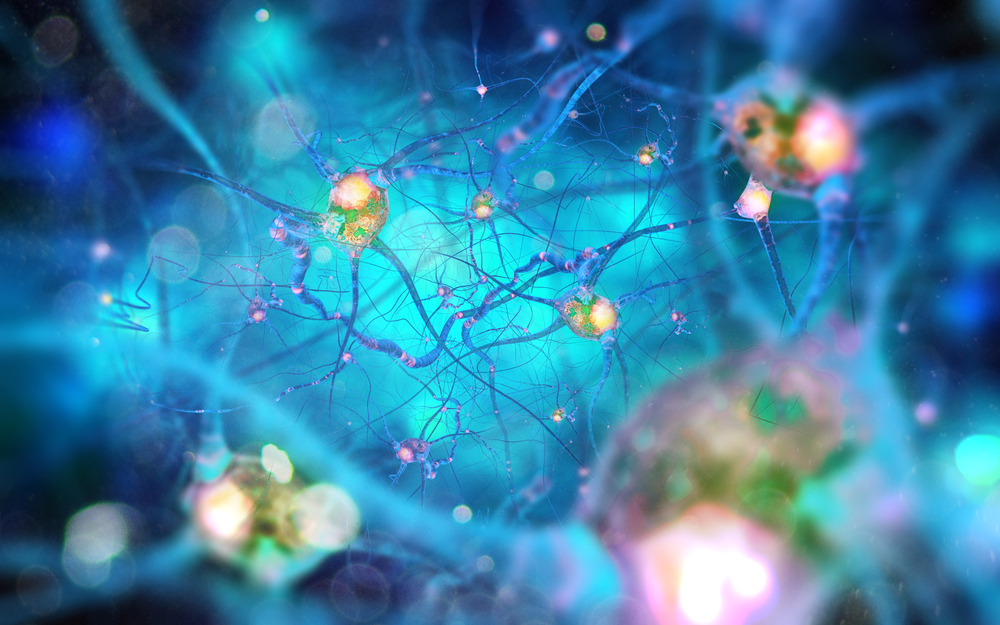Common Parkinson’s Mutation Tied to Neuron Damage via Calcium Imbalance in Study

Andrii Vodolazhskyi/Shutterstock
The most common mutation associated with Parkinson’s disease — called LRRK2-G2019S — results in abnormal global protein production that increases the levels of calcium within dopamine-producing neurons, likely making them more vulnerable to degeneration, a study suggests.
“Mapping out this progression of events is an important advancement in understanding the disease and provides more information on how Parkinson’s disease may initially arise,” Valina Dawson, PhD, a professor of neurology at the Johns Hopkins University School of Medicine, and the study’s senior author, said in a press release.
These findings may also help to identify new treatment targets and approaches for Parkinson’s.
Dawson, who is also the director of both the neuroregeneration and stem cell programs at the medical school’s Institute for Cell Engineering, noted that “defining each step in the pathway linking the LRRK2 mutation and brain cell death represents a potential target for [therapy] interaction.”
The study, “Defects in mRNA Translation in LRRK2-Mutant hiPSC-Derived Dopaminergic Neurons Lead to Dysregulated Calcium Homeostasis,” was published in the journal Cell Stem Cell.
Parkinson’s is characterized by the progressive loss of dopaminergic neurons — those producing dopamine, one of the major chemical messengers in the brain — in the substantia nigra, a brain region that controls movement.
Mutations in the LRRK2 gene are the most common genetic causes of Parkinson’s, being typically associated with familial disease, but also found in sporadic cases — this disease’s most common form.
The LRRK2 gene provides instructions to produce LRRK2 (also known as dardarin), an enzyme whose functions remain largely unclear. Based on its enzymatic domains, it is thought to interact with and activate other proteins involved in several cellular processes.
G2019S, the most frequent disease-causing LRRK2 mutation, was shown to boost LRRK2’s activity and increase global protein synthesis (the production of new proteins) by interacting with ribosomes — a cell’s protein-making machinery. Notably, these effects were associated with neurodegeneration in animal and cellular models of Parkinson’s.
How this dysregulation in protein synthesis contributes to the neurodegeneration of dopaminergic neurons, however, is not known.
Institute researchers, with colleagues at other U.S. universities and institutes, discovered that calcium dysregulation might be the missing link.
Previous studies have shown that calcium signaling — the flow of calcium ions in or out of a cell (but usually in), which is mediated by specialized channel proteins — plays a key role in neuronal communication, function, and survival.
The team first analyzed protein synthesis and ribosome activity in dopaminergic neurons generated from induced pluripotent stem cells (iPSCs) derived from three unrelated Parkinson’s patients carrying the G2019S mutation, and three healthy individuals.
iPSCs are derived from fully matured cells that are reprogrammed back to a stem cell-like state, where they can give rise to almost every type of human cell. They can be genetically modified to carry known disease-causing mutations, or derived directly from patients to be used as cell models that mimic the disease’s genetic and clinical diversity.
The researchers found that dopaminergic neurons derived from Parkinson’s patients with the G2019S mutation had a global shift in protein synthesis, compared with those from healthy donors.
Further analyses showed that this shift was likely associated with changes in the ribosomes’ preference for particular types of messenger RNA (mRNA) — the molecule that carries instructions from DNA to make a protein. Protein synthesis from mRNAs with more complex structures was generally increased in patient-derived dopaminergic neurons.
This preference can cause “major problems down the line, because it may shift the levels of proteins whose precise regulation is essential for neurons to function and survive,” Dawson said.
Indeed, such dysregulation in protein synthesis was found to increase the levels of proteins involved in calcium balance, including calcium channels, which are essential for the transmission of signals between nerve cells.
Having more calcium channels on the cell’s surface allowed the entry of more calcium ions, which accumulated inside these dopaminergic neurons.
Notably, excessive levels of calcium and subsequent problems with mitochondria (the cells’ powerhouses) in these cells are considered one of the major contributors to Parkinson’s neurodegeneration, the team noted.
“We speculate that dysregulation of [calcium balance] and altered [protein synthesis] together lead to the increased cellular metabolic needs and mitochondrial burden” that “potentially contributes to the progressive and selective dopaminergic neurotoxicity in [Parkinson’s],” the researchers wrote.
“This deep dive into the molecular players in Parkinson’s disease may provide some answers to its onset and progression,” said Dawson, who hopes this work will open new avenues for disease treatment.
Due to the limited number of patient-derived iPSCs used in the study, however, future research using larger samples is needed to confirm these findings.






